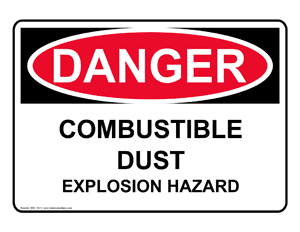OSHA has dismissed challenges from the grain industry against the inclusion of combustible dust in the Final Rule of the newest Hazard Communication Standard (HCS). The HCS was first issued in 1983 and revised in 2012 to standardize classification, information dissemination, and labeling practices for hazardous chemicals. Grain industries, such as the National Oilseed Processors Association (NOPA), the National Chemistry Council, the Corn Refiners Association, the National Grain and Feed Association and the Renewable Fuels Association, challenged the HCS about the classifications for combustible dust. These groups claimed that OSHA failed to give proper notification for the consideration of HCS in the 2009 deliberations, and had not given opportunity for comment on the decision to include combustible dust in the HCS.
 A three-judge appeals panel rejected the challenge. They held that the proposed HCS provided adequate notice as OSHA had listed combustible dust as an “unclassified hazard” subject to general labeling, information sheet and training requirements. OSHA had also requested and received industry comments prior to this decision. In 1994, OSHA rejected the grain industry’s position that HCS should not include grain dust.
A three-judge appeals panel rejected the challenge. They held that the proposed HCS provided adequate notice as OSHA had listed combustible dust as an “unclassified hazard” subject to general labeling, information sheet and training requirements. OSHA had also requested and received industry comments prior to this decision. In 1994, OSHA rejected the grain industry’s position that HCS should not include grain dust.
NOPA asserted that OSHA had violated due process, given the lack of a definition of combustible dust that interfered in the final ruling. NOPA members claimed they were not notified about compliance policies and that the unclear definition left wide room for interpretation.
The appeals panel replied, “Because preexisting OSHA definitions and voluntary standards reflect a general consensus on the meaning of combustible dust, OSHA could reasonably conclude that it was unnecessary to articulate a single, uniform definition in the Final Rule.” Furthermore, the court stated that the term “combustible dust” has a thorough enough definition to provide warning of enforcements, and OSHA has provided additional guidance of how the HCS will be applied.







